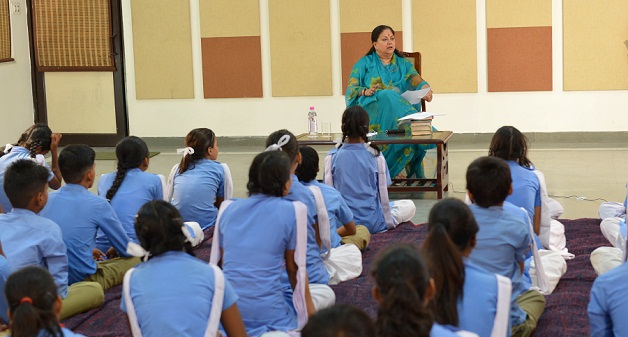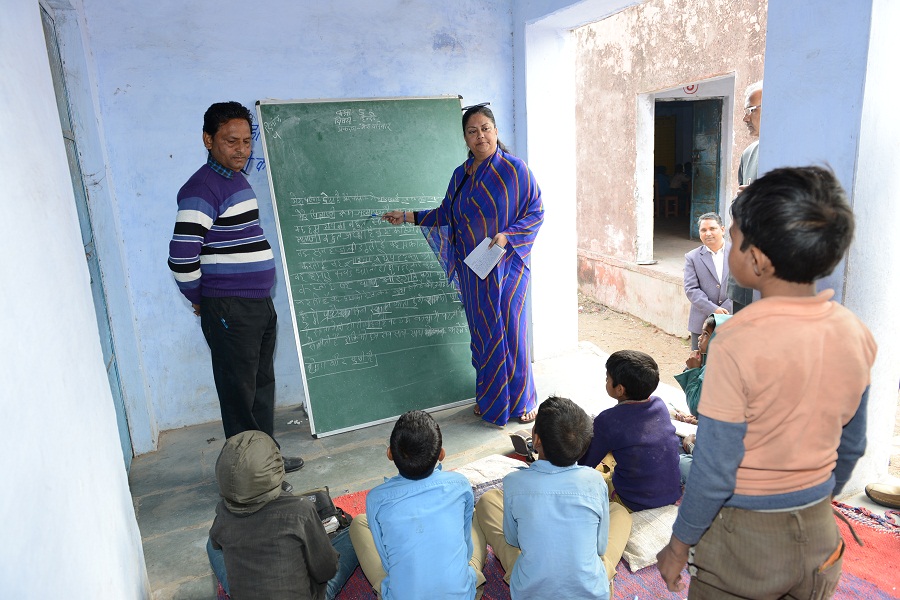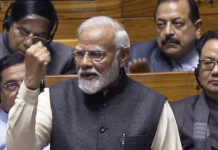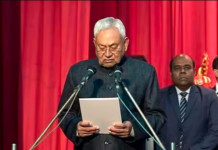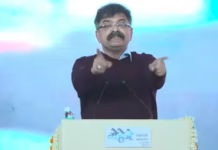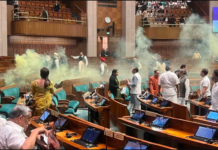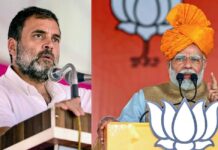The Journey of Rajasthan from ‘Bimaru’ to a ‘Well-Read’ State in Last 2 Years.
Rajasthan has witnessed mindless wars and bloodshed resulting from ignorance and illiteracy in past. Majority of our forefathers were a part of an uneducated society, which stood on irrational ideologies. Education, the torch-bearer of modern society, has the ability to transform our thinking. It directs us towards the right path and gives us the confidence to make correct decisions in life. Realizing the importance of education in our lives, the current BJP government stresses on encountering existing academic challenges in the state. Today, Rajasthan has made significant improvements in this sector. But, “the road to success was never an easy one”, it was full of obstacles and challenges for the present government.
Rajasthan Experiences a Dramatic Increase in Literacy Rate
Under the ex-Gehlot government, Rajasthan was among the most backward regions in country with 60.4% literacy rate (Census 2011). In June 2013, a study conducted by Planning Commission on ‘Refining State Level Comparisons’ marked Rajasthan as a ‘BIMARU’ state for its underperformance in education sector. However, literacy rates have viewed an upward trend in Rajasthan with CM Raje back in power, in December 2013. The current literacy rate of Rajasthan is 67.1%, compared to the national literacy rate that stands at 74.04% (Source: indiaonlinepages.com).
Roadblocks that Hindered Educational Growth
As per ASER’s report, Rajasthan stands at 21st position in the country. With the objective to bring Rajasthan among top 10 educated states, CM Raje came up with multiple short-term and long-term goals. But, poor school conditions, insufficient resources, departmental constraints and uncoordinated initiatives were major constraints. Other challenges hindering educational growth in Rajasthan were:
- High number of schools in villages resulting in poor administration (1.83 schools/gram panchayat),
- 3429 Secondary schools in state with limited seats,
- 28,000 schools in states had less than 30 kids, but increasingly high number of teachers,
- Low transition rates of students from junior to senior high school (90% →50%)
- Weak leadership structure,
- Poor infrastructure & restricted classroom space for development (20 students per class),
- Defunct faculty unit with less number of proficient school staff (<60%)
- 50% vacant posts for faculty,
- No MIS (Management Info-System) at school level,
- Poor coordination among department staff, partner organizers and faculty.
- Lack of goals, supervision and monitoring units.
Having almost 18 million school-going children, Rajasthan held potential to show large-scale reformation. Knowing this fact, the current government identified states whose experiments were successful and created a model education system for Rajasthan.
Government’s Efforts Show Colours In Last 2 Years
Under Raje’s supervision state education board implemented a roadmap for school system transformation, developed special programs for specific students needs and devices new administration structures. A budget of 204,24,00,000 crores was allotted for SIQE (State Initiative for Quality Education). With this, the government aimed to upgrade 305 schools with computer/IT centres, arts & craft room, practical labs, library, drinking water facilities and digital learning classrooms. Consequently, there are:
- 9,895 ‘Adarsh’ secondary schools (Class I to XII) with 3.1 million students enrolled in them. These schools are furnished with advanced computer rooms, scientific labs, drinking and washroom facilities, skilled staff and better classrooms, exclusively based on ‘Vivekanand development model’.
- 9,610 ‘Utkrisht’ secondary schools (Class I to XII) with
- 132 ‘Model English’ schools for providing English instruction to 35,000 students of backward communities.
- 2,000 schools having 160 thousand students have been reinforced with Satellite classes to provide special help in English, Maths and Science.
- 132 thousand students receive special remedial education in more than 6,000 senior secondary schools.
- Vocational Educational centres for 55 thousand secondary and senior secondary students.
- 7,000 new ITC labs in schools
- 352 ‘Sharde’ girls hostels (with transport, meal and school supplies facilities) to fulfil the requirements of 29,000 girls studying junior and senior secondary schools.
- 12 Digital Learning Smart solution systems providing e-training to 2 lakh teachers, 10,000 principles, 1 thousand administrators.
- 51 new ITIs in state for advanced training.
To improve the transition rates of students, government has merged 3,766 primary schools with nearby 11,696 junior/senior secondary schools. Thus, enrolled students can conveniently complete their education without transferring from one location to another.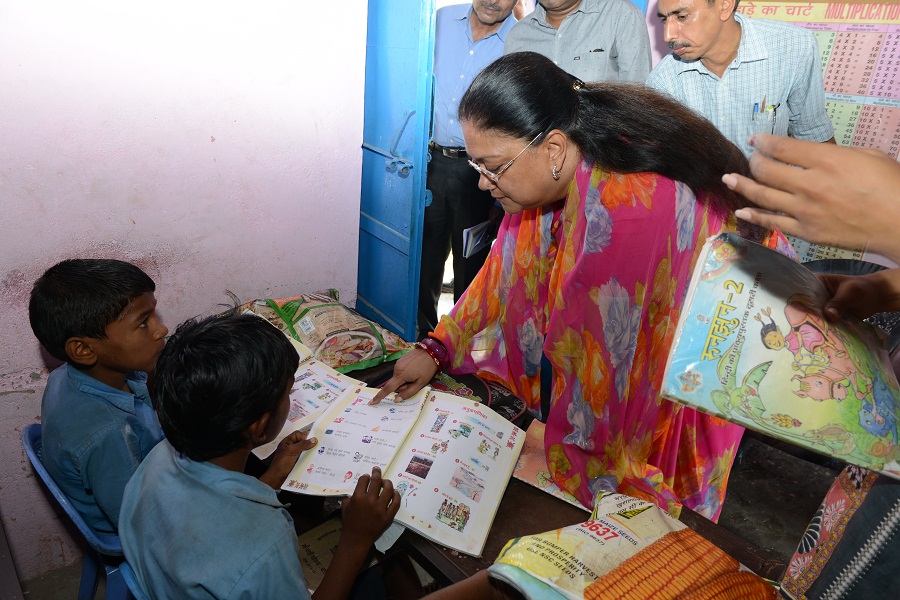
Impact of These Changes on Education System
- 15,00,000 new students sought admission in government schools,
- 66% students took admission in Intermediate classes,
- 70% passed their exams with flying colours (compared to 56% in 2013),
- 88% successful results of class XII,
- 73% successful results of class X,
- 36,000 new teachers appointed in school, 13,098 new lecturers appointed in state college and universities, 2278 new librarians and lab assistants for schools.
- 62% schools are present near residential homes in villages,
- 94% primary schools have proper drinking water facilities,
- 95% schools have washroom facilities,
- 69% schools with library and 55% schools with electric connections,
- 51% schools have sports ground/stadiums for athletic activities,
- 9% women teachers are a part of faculty.
- Ratio of male to female students in classrooms: 1:.85
Witnessing the outstanding development of government schools in state, many parents have shifted their wards from private schools to government schools.
Considering these achievements, it’s safe to say that Rajasthan has successfully implemented the roadmap for development in last 2 years. Secondary targets to be met before 2020 includes appointing skilled inspection units, increasing the number of students per class, installing working computers and equipment in labs and encourage girl education in state.
Soon, Rajasthan will be pioneering in Education and Skill Development, all thanks to the efforts, vigilance and strategies of current government.


